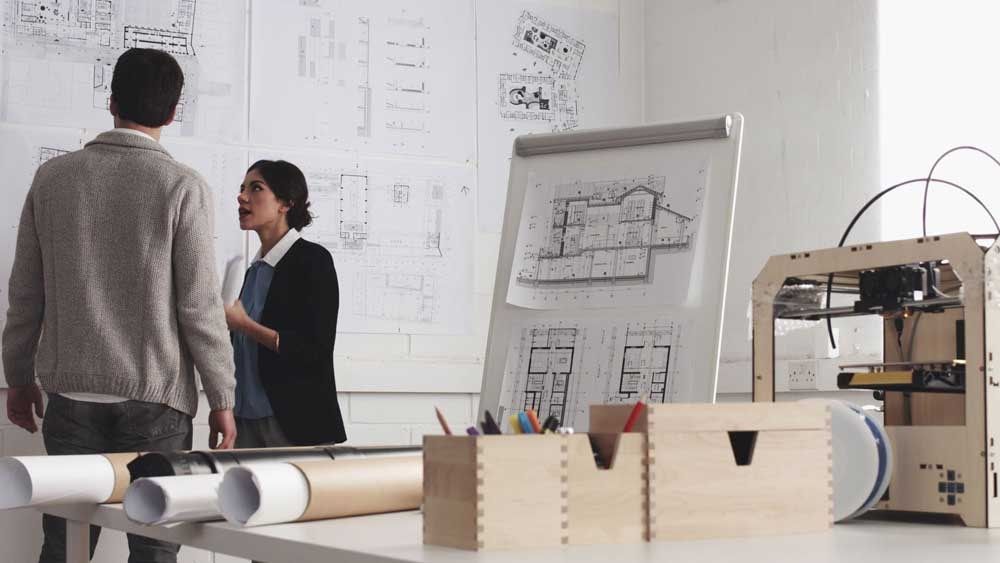Join thousands of people who organise
work and life with Novatr.
What is the Scope of Sustainable Architecture - and How to Build a Career in it?
Juby John
9 mins read
April 22

What is Sustainable Architecture?
Sustainable Architecture, also referred to as Green Architecture, aims at reducing the negative environmental impact of building constructions by creating efficient and environmentally-responsive structures and spaces. The core elements of sustainability in the building design focus on an integrated approach for efficient use of materials, minimizing waste, efficient use of water and energy consumption, site optimization, and enhanced indoor environmental experiences.
Sustainable building design and construction have gained prime importance over the years. Almost every country has initiated and created its innate national or regional green building rating system. In several countries, sustainable building practices have become part of the construction practices and building bye-laws.
Scope of Sustainable Architecture
Large design and construction firms prefer architects and designers with skills in sustainable design. In many organizations, in-house green consultancy teams promote and offer good opportunities for specialized professionals. Besides this, there are also façade design firms and green building consultancy firms that help comply with green building ratings, and technical professionals are in demand in such firms.

Sustainable Architecture for a better world
The knowledge of sustainable building design also gives budding and entrepreneur architects a chance to explore the scope of sustainable architecture and set up their ventures specializing in specific or whole aspects of green building design.
The major recruiters of professionals in this field generally include architecture firms, consulting services, educational institutions, real estate developers, and engineering services.

Roles Where You Could Practice a Sustainable Architecture Career
• Building Energy Analyst or Simulation Expert
• Sustainable or Green Building Architect/ Sustainable Design Consultant
• Project Architect
• Services Specialist
• Ecological Landscape Designer
• Green Building Accredited Professional
• Preservation Architect
• Landscape Architect
• Architectural Project Manager
• Project Designer
• Interior Designer
The list mentioned above denotes some of the existing defined careers in sustainable architecture. However, owing to the multidisciplinary and interdisciplinary nature of the field, it is interesting to note that new job profiles can also emerge.
Additional training in the teaching domain would also benefit professionals interested in the educational sector, as there is a great demand for teachers and trainers in this field.
How can you take up a career in Sustainable Architecture in India?
1. Undergraduate Level Courses or Diploma

Sustainable Architectural Design and Research Study at My ArchiSchool
If you are someone with a deep-rooted interest in sustainable architecture since your early formative educational years, exploring the Undergraduate degrees in landscape architecture, sustainable architecture, and urban design would be a good option. You could go in for these courses to pursue your interest and establish a career in the field of sustainable architecture. An early career start would always give you an edge in the domain.
2. Postgraduate Level/ Masters Degree
One can also opt for a two-year master's degree specializing in environmental architecture, sustainable design, or environmental engineering. This is ideal for students who have accomplished their graduation and want to enhance further their competence and knowledge in innovation, research, and implementation of the environmental impacts of built environments.
A Postgraduate or Masters in Sustainable architecture establishes further credibility in the field.
3. Certified Online/Offline Courses

E-learning is the new norm
Short-term online/offline courses on energy efficiency, water management, rainwater harvesting, sustainable building materials, solid waste management, urban farming, etc., are also available. Many related courses like ecology, environmental technology, Horticulture, GIS, Geology, and site planning may be courses or part of main landscape programs.
For architects and building professionals interested in energy study, courses related to building energy simulation would be helpful. They could further join MEP Consultancy firms to enhance their practical work experience. For Sustainable Architecture, many institutions in India and abroad offer technical courses in this domain. There are also options on many online platforms that offer short/long-term certification courses. These could be explored as a mode of upskilling remotely.
Also, it is advised to go through the respective university or e-learning platform website to check for details and the latest updates before applying for any programs or online certified courses.

4. Gain practical experience by working in firms that practice Sustainable Architecture

Sangamam by Ar. Anupama Kundoo
Another important way of getting a fair understanding of the scope of sustainable architecture and establishing a sustainable architecture career is by gaining practical experience working with firms that practice green architecture.
Designing and implementing sustainable practices in projects go a long way in controlling the damage done to the environment by creating the right balance between human wants and aligning it with nature. This blend creates a self-sustaining module that contributes to an efficient building life cycle and contributes positively to the ecosystem. Exposure to such working methodologies would surely boost a career in Sustainable architecture.
Check out the design philosophies and green building techniques of some of the prominent architects practicing sustainable architecture to understand the nuances of the field.
Skills Required for a Sustainable Architecture Career
One who aspires to be a sustainable architect must be passionate about protecting the environment. Analytic abilities, design knowledge, and basic software skills such as CAD (computer-aided design) would be desirable. It becomes important here to mention the role of the new-age digital skills like BIM, computational design tools like Rhino & Grasshopper, Dynamo (for Revit), Flux (inter-platform application) etc. Computational design tools provide an easy way to harness the power of computation in a design. In addition to facilitating visual representation, they help present multiple options, automate repetitive processes and help to think algorithmically.
Basic background in Mathematics may be a mandate in some universities.
For a career in sustainable architecture, the following hard and soft skills are required.
• Designing skills
• Creativity
• Relevant software skills
• Analytical thinking skills
• Mathematical skills
• Team player
• Verbal communication skills
• Reasoning skills
• Attention to details
Green Certifications to Enhance Professional Credibility
Green building professionals can improve their credibility by getting accredited as Master Trainers with the Bureau of Energy Efficiency (BEE) or Building energy efficiency specialists.
Indian Green Building Council's (IGBC) rating system and Green Rating for Integrated Habitat Assessment (GRIHA) are also some green building rating systems offering self-study opportunities and accreditation training for green building professionals.
The USGBC (United States Green Building Council), a nonprofit organization that supports the design and development of healthy communities through the efficient transformation of the built environment, conducts exams for those who aspire to become LEED (Leadership in Energy and Environment) accredited professionals.

Sustainable building professionals play a prime role in designing buildings that have a reduced impact on the environment at every building stage. The ability to have an overall perspective of environmental sustainability, knowledge of the ecological issues, and technical know-how are important factors needed to provide innovative solutions to make buildings and promote sustainable architecture.
If you have a love for nature and a passion for being the creator of built spaces that co-exists with it, then choose the program that best suits you.
Stay tuned for more insights on sustainable architecture, its concepts, and its characteristics. For more career insights, and other articles related to architecture and design check out Novatr's Resources!
Join 100,000 designers who read us every month


